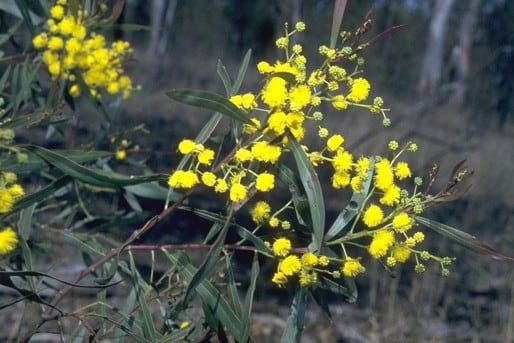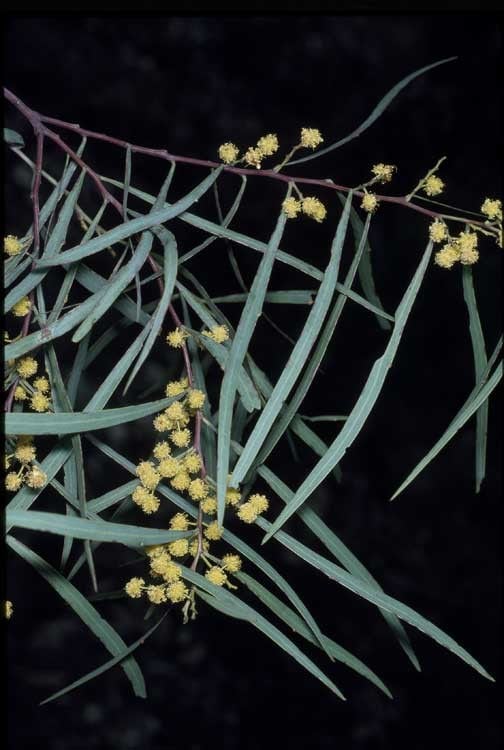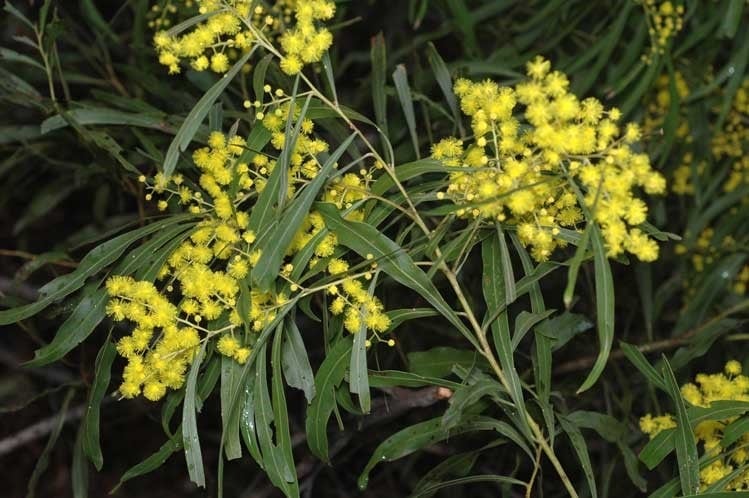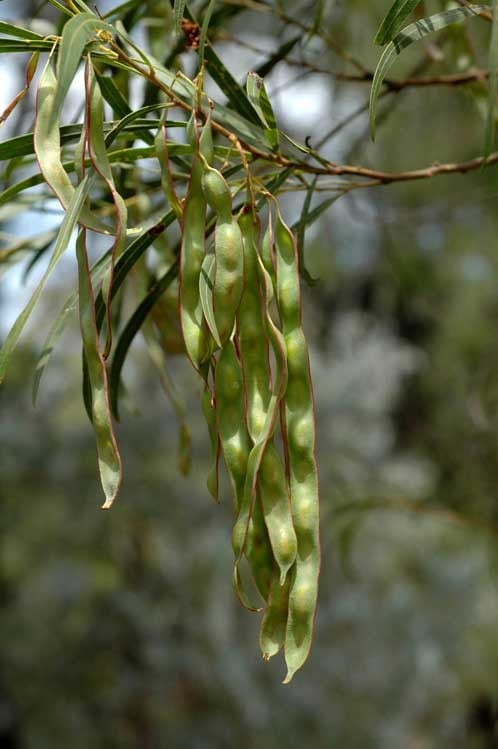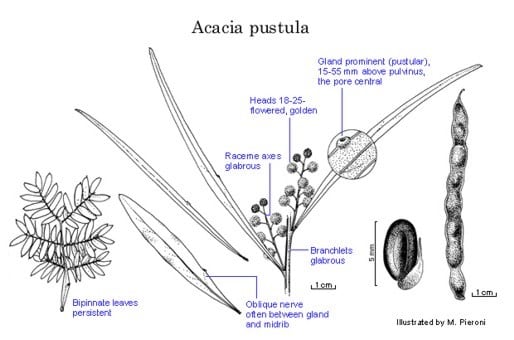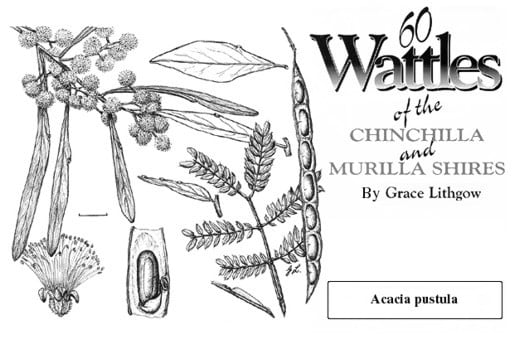Acacia pustula Maiden & Blakely
WATTLE
Acacias of Australia
Family
Fabaceae
Distribution
Common in an area bordered by Cracow, Condamine, Kingaroy and Eidsvold with disjunct occurrences in the Carnarvon and Salvator Rosa Natl Park areas and N of Mitchell, south-eastern Qld.
Description
Tree to 15 m high; juvenile bipinnate leaves persistent until plant is at least 2 m high. Branchlets angled at extremities, dark reddish, glabrous. Phyllodes variable, linear to narrowly elliptic, (4.5–) 5.5–14.5 cm long, 2–14 mm wide, broad on young plants, narrow and similar to A. angusta on mature plants, thin, glabrous, 1-nerved; lateral nerves few and indistinct; gland pustular, 15–55 mm above pulvinus, often connected to midrib by a fine oblique nerve, rarely a second gland some distance above the other. Inflorescences racemose; raceme axes 1–9 cm long, glabrous; heads globular, 18–25-flowered, golden; peduncles 3–5 mm long, glabrous. Flowers 5-merous; sepals united; ovary glabrous. Pods slightly raised over seeds, to c. 12 cm long, 5–7 mm wide, thinly coriaceous, mid-brown, glabrous. Seeds longitudinal, oblong to elliptic, 5–6 mm long, slightly shiny, black; aril clavate.
Habitat
Grows in sand or sandy loam over sandstone, in eucalypt woodland or open forest.
Specimens
Qld: Mt Playfair, M.M.Biddulph 154 (BRI); 8 km W of Cracow, R.W.Johnson 841 (BRI, MEL); Kingaroy, N.Michael 2977 (BRI, CANB); Chesterton Ra. Natl Park, c. 30 km N of Mungallala, Sept. 1992, M.O’Malley (BRI); foothills of Great Dividing Ra., c. 120 km NW of Injune, I.R.Telford 5841 (BRI, CANB n.v., NSW n.v.).
Notes
L.Pedley, Austrobaileya 1: 292 (1980), lectotypified A. pustula on Bancroft 13, collected in 1918. At herb. NSW there are two 1918 collections of no. 13 that can be regarded as type, namely, Mar. 1918 (NSW58288) and Aug. 1918 (NSW58291); there are duplicates of the latter at BRI (i.e. NSW58289 & 58290). These collections all represent the same taxon and, judging from Bancroft’s note on NSW166398, they probably all came from the one plant. An unnumbered, undated Bancroft collection, not regarded as a type even though it was collected from Eidsvold, is queried at BRI as being an A. jucunda × A. pustula hybrid (BRI340955 & 340956).
L.Pedley, Austrobaileya 2: 353 (1987) treated A. pustula as a subspecies of Racosperma neriifolium (= A. neriifolia), but until the taxonomic status of the variants within A. neriifolia is clarified it seems preferable to retain this taxon as a distinct species. Specimens with narrow, linear phyllodes resemble A. angusta which is distinguished by its hairy raceme axes and peduncles, 1–3 glands with the lowermost usually 1–4 mm above the pulvinus, and free sepals. Acacia pustula appears very closely related to A. linearifolia (N.S.W.), distinguished primarily by its glands (see discussion under A. linearifolia) and the relationship between the two species should be re-examined.
FOA Reference
Data derived from Flora of Australia Volumes 11A (2001), 11B (2001) and 12 (1998), products of ABRS, ©Commonwealth of Australia
Author
Minor edits by J.Rogers
B.R.Maslin
This identification key and fact sheets are available as a mobile application:
URL: https://apps.lucidcentral.org/wattle/
© Copyright 2018. All rights reserved.

